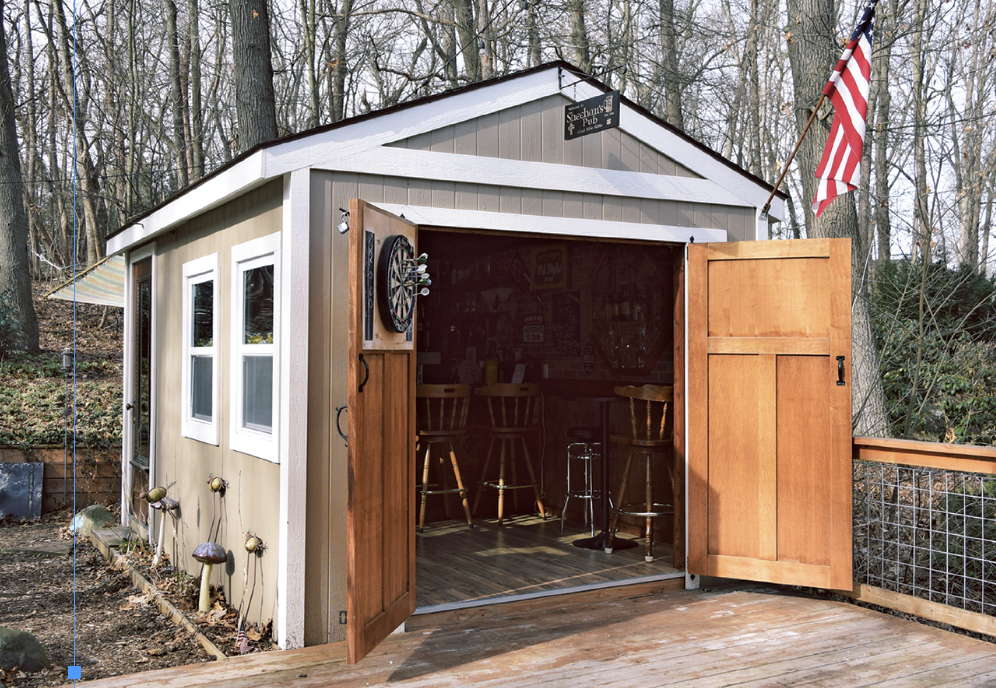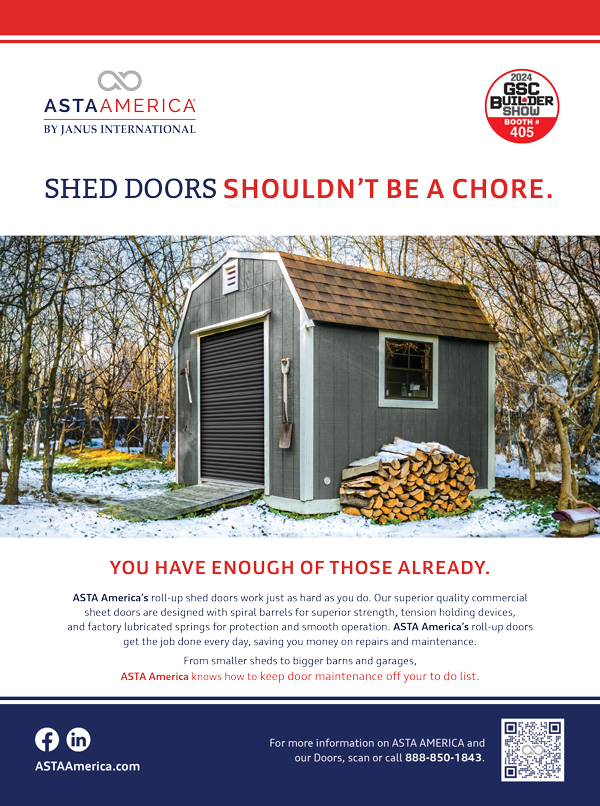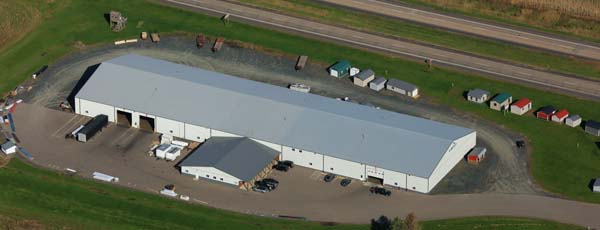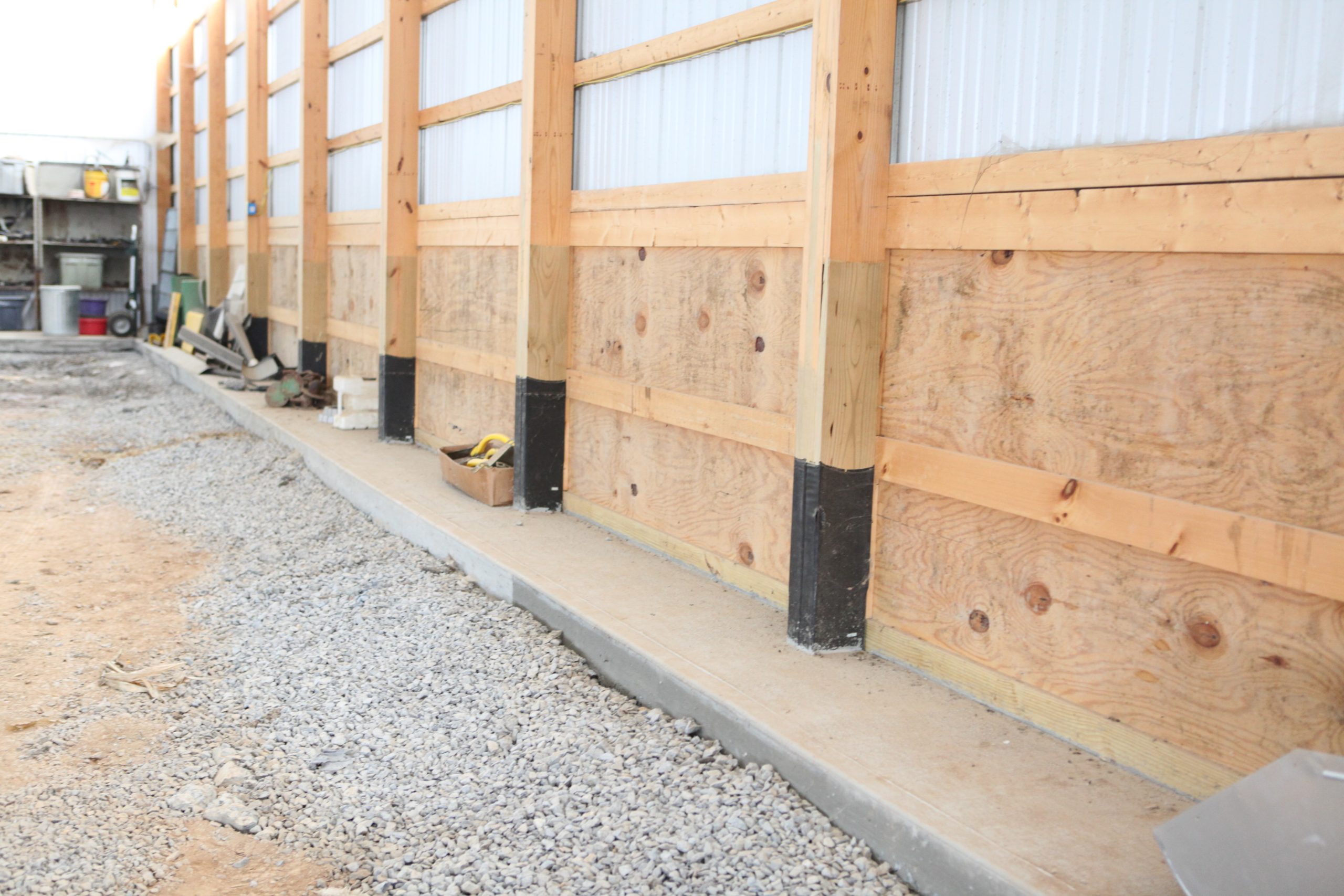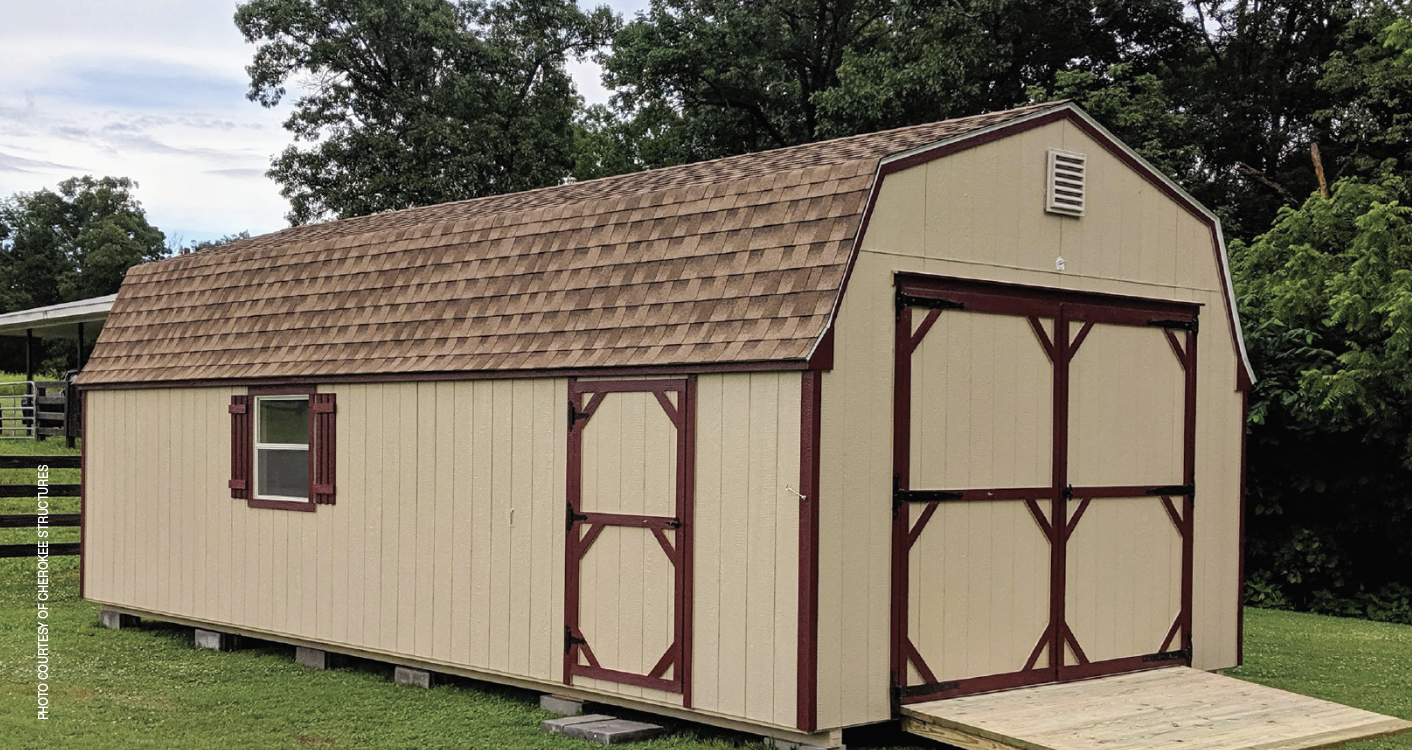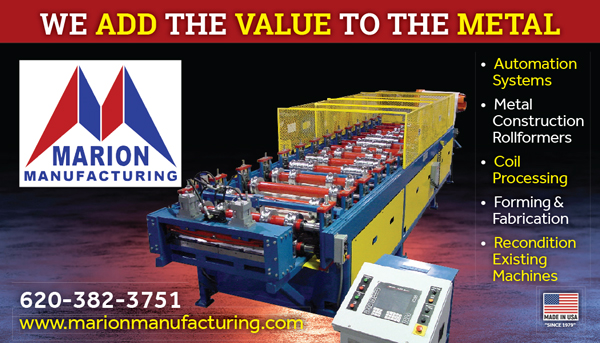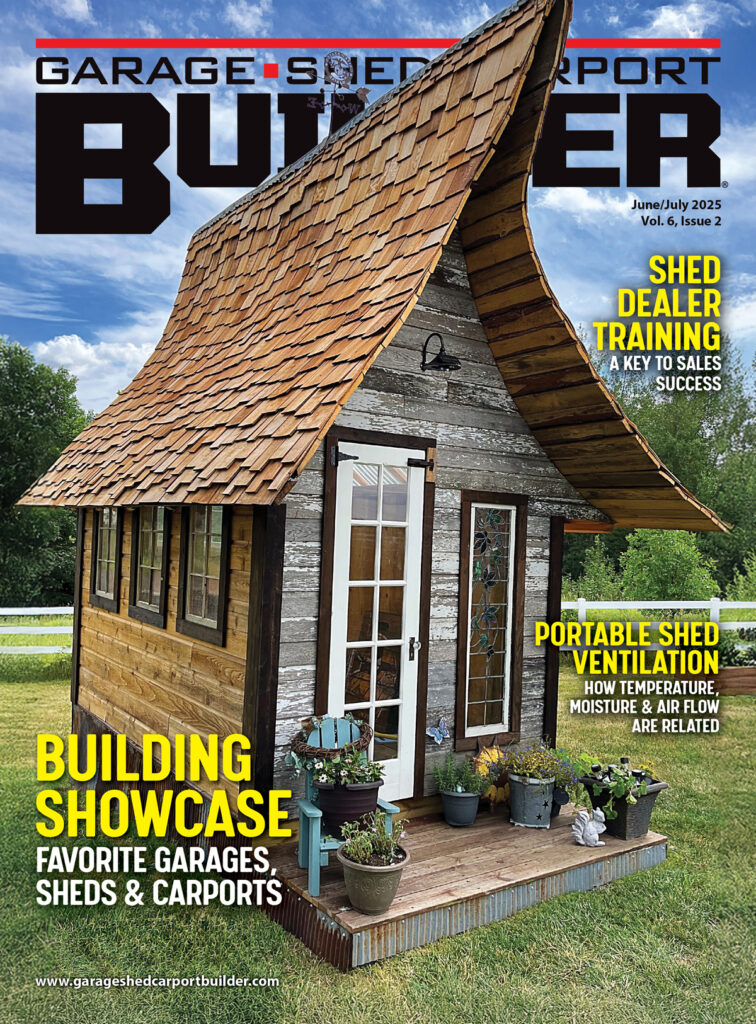Demand For High-End, Custom Sheds Is Alive & Well
You might say that a party gave rise to custom shed builder PubSheds® Inc. Mike Sheehan, who founded the Grand Rapids-based business, built a pub shed in his own back yard for his personal use. He wanted to keep people out of the house during family parties and wanted someplace to gather in inclement weather. The pub shed was a hit with family and friends. “After a couple of parties,” Sheehan said, “some friends said they wanted one. And then their friends wanted one.” So, about five years ago, Sheehan turned his side-gig into a business: PubSheds Inc.
What started out as building a few sheds here and there has turned into a full-time business.
“We get all our business through word of mouth and Facebook advertising,” said Sheehan. “We’ve sold sheds all over the country. We build dog kennels, art studios, beer garden bars, backyard offices … anything anyone could want. Sometimes the customer will send pictures and we’ll incorporate everything from their wish list into the design. Everything we build is custom built to what the customer wants.”
When asked how 2020 affected business, Sheehan said, “Last year was slow because of COVID, but this year it really took off. We have just over 40 [sheds] on the books so far this year [at the end of June]. Right now, we’re looking at being sold out. I can build more if I get the right help and materials. But I’m probably not taking on any new orders because I want to be able to keep the commitments I’ve made. With the cost of these things, and then each one being specific to each customer’s needs, I don’t want to make commitments I can’t keep.”
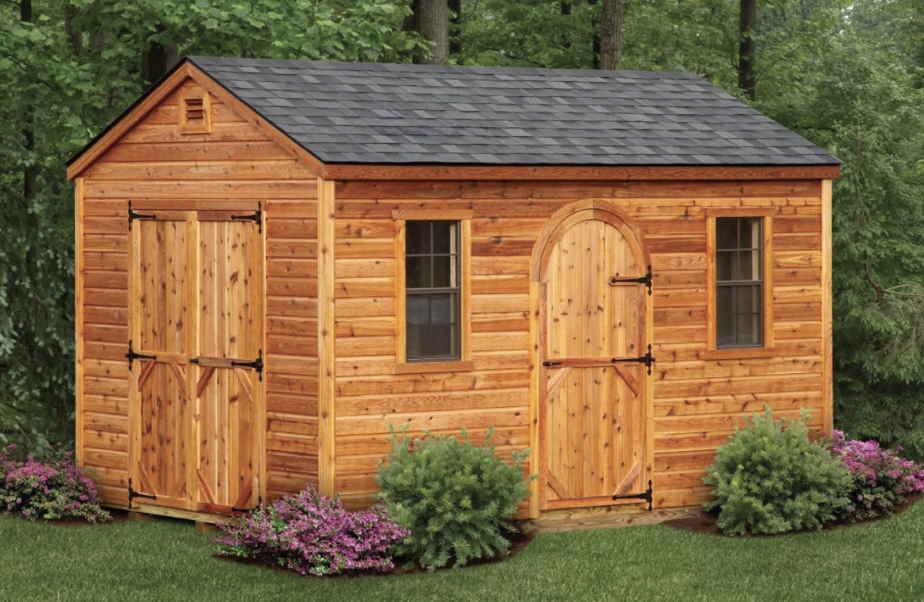
‘Deluxe’ Is Standard
Sheehan made a point of differentiating his sheds from other manufacturers’ sheds. “My ‘basic’ buildings are what a lot of other builders would call a ‘premium’ or ‘deluxe’ building,” he said. “Our basic pub units come with a 37” flat screen TV, a wall-mounted 15” stainless steel sink, an oak bar and a liquor mantle.” Electrical service and full insulation are also standard in the pub sheds. As are ¾” treated plywood decking, wall shelves and chip racks, brick paneling and bead board interior, two 30”x36” insulated vinyl windows, 72” double doors (on sheds at least 10’ wide; customer’s choice of barn-style cedar, fiber French doors, or sliding patio), tongue and groove ceiling, engineered flooring, and 25-year dimensional shingles. From there, customers can upgrade or add options including metal roofing, custom doors, and additional windows. “Maybe the customer doesn’t want an oak bar but wants a corrugated metal bar with a butcher block top. We can make those adjustments and price it accordingly,” he said. “We make ourselves really easy to work with.”
The portable sheds are built on treated 4”x4” runners with 12” on center (OC) floor joists and treated ¾” plywood decking; walls are built with 2”x4”, 16” OC. Sidewalls are built with a minimum height of 7’ 5”, with a minimum height of 10’ 6” at the peak. “Our rafter system and wall heights are taller than a lot of other sheds. Sidewalls are nearly 7 ½ feet tall so it feels like you’re in a bigger structure,” he said. Rafters are built with 2”x6” (as opposed to commonly used 2”x4”), which are either 24” OC or 16” OC, depending on the building size.
Sheehan’s crew builds portable buildings in the shop or will build on-site if necessary. They build up to 14’ wide by 52’ long in the shop, which is the maximum size that will fit on the trailer. And they’ll build it at the building site (no size limit) if there are obstacles that won’t allow for placement of a pre-built structure.
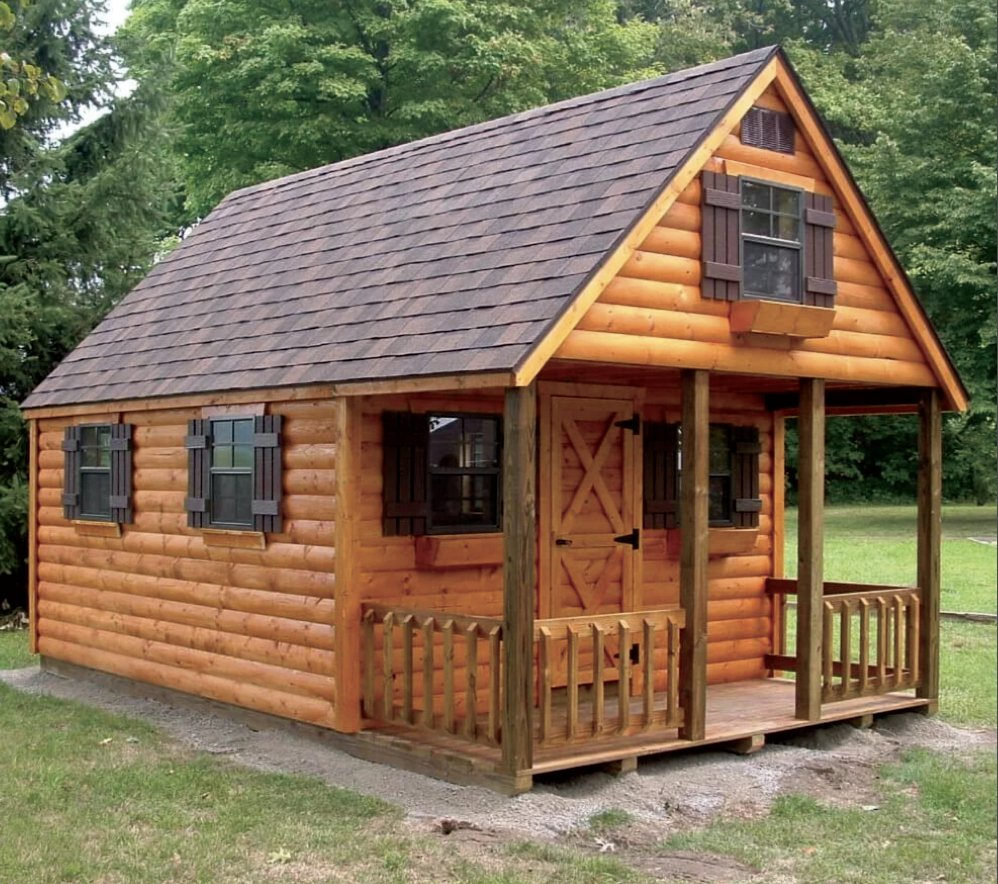
Quality Matters
Quality assurance is a top priority for Sheehan; that means quality in the materials, the build, and the delivery. Although he’s open to using whatever materials the customer wants, Sheehan said he uses mostly LP SmartSide siding and sources his roofing materials (either metal or shingles) through ABC Supply. Exteriors are all hand-caulked and then hand-painted with Sherwin Williams paints and stains. Interior bead board is hand-finished with Minwax stain. “The bars and mantels are all handmade in the shop,” he explained. “The sinks are custom made for us by a company out west. We’re real sticklers on what leaves our building,” he said. “I have yet to have a customer complain.”
Many of the materials are purchased through a Menard’s business account. “They’re the most competitive on pricing for me,” he said. “With the size of my company, it’s hard to bring truckloads of stuff in. The basic materials like lumber are brought in in bigger volume.”
Insulation also sets buildings by ShedPubs apart; Sheehan recommends spray foam in his units. He hires Third Coast Spray Foam, a local company, to insulate his buildings. “They do a minimum of 2” spray foam inside and out. We actually build the floor deck, have it spray foamed, and then flip it so the insulating material is sandwiched between the ground and subfloor so the entire building is insulated from top to bottom.”
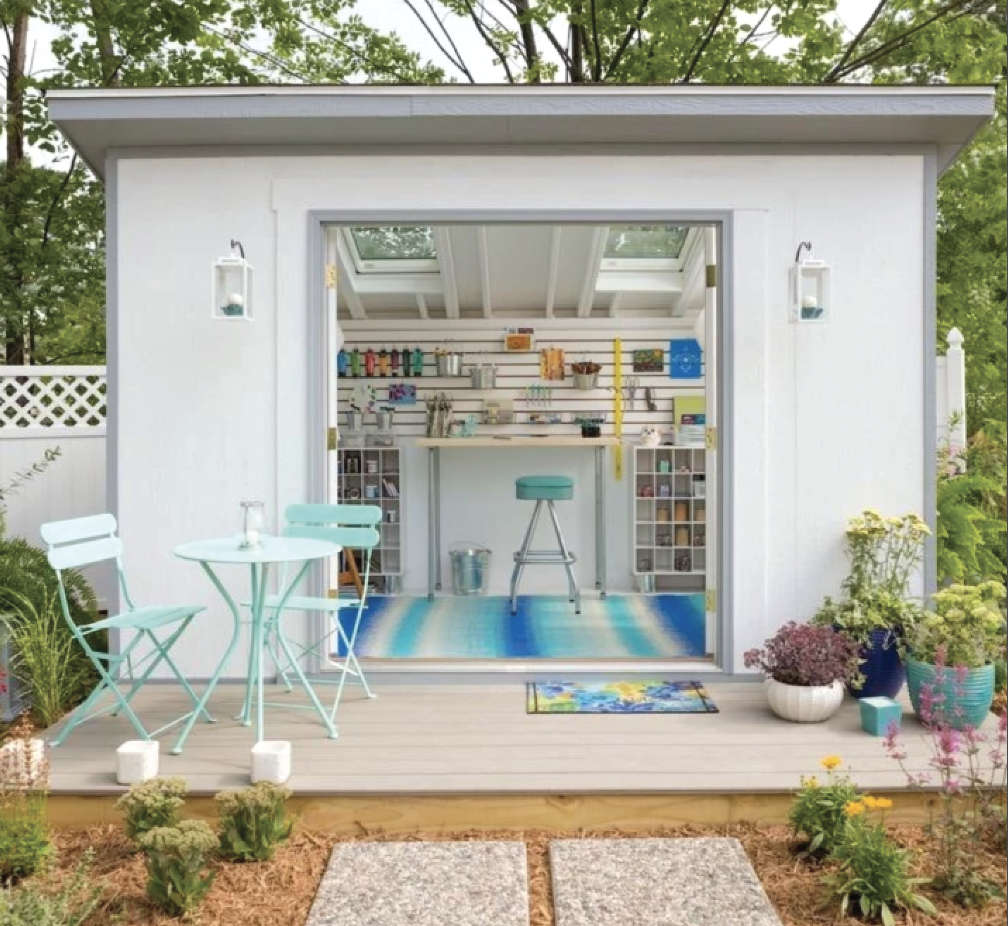
Challenges
Finding the right crew can be difficult. “I have several guys at a time working on a building,” he said. Like the rest of the building trade, material shortages are affecting Sheehan’s delivery times. “It usually takes about two to three days to get a shed done. But it can take up to 2 1/2 weeks if we’re waiting for material. Usually, though, a normal-size building we can get out in a couple of days.”
Another challenge is making sure the site is prepared properly before shed delivery. “We offer to help prep the site or team up with a company to prep the site,” he said. “If the shed is placed on a surface that’s not level, there are issues with windows and doors not opening right … And then the owner will call me thinking there’s an issue with the building.” So, it’s in the shed builder’s best interest to make sure the site is level.
With the size of his business and the relatively few sheds he delivers each year, Sheehan said he can’t justify getting his own mule, truck, and trailer; so, he hires the shed delivery equipment when it’s needed. “Anything outside of our normal delivery area, we run the freight past the customer beforehand,” he said. Once he gets the go-ahead from the customer, he proceeds. “We just delivered [a shed] to Milwaukee. We took it across Lake Michigan on the ferry from Luddington [Michigan] to Manitowoc [Wisconsin] to Milwaukee.” Even with the added expense, “the customer was ecstatic.”
Conclusion
By finding product for which there is a demand that outweighs supply, and filling that demand with customer satisfaction as a top priority, the future is promising for builders who can rise to meet the challenges of today’s construction market.

3 Keys to Good Business
1. Communicate
Communication with the customer is critical. If there’s a timeline problem, explain the situation. “Customers are empathetic right now with material issues,” said Sheehan.
2. Be honest
Be honest and price things right. “Our buildings are priced according to labor and what’s included in the unit. We don’t price gouge. I’ll share material costs with my customers so they can see what goes into it. We’re that open with our customers – that’s why we get a lot of business.”
3. Educate
“Customers don’t realize what it takes to maneuver a building into a spot. I’ll actually go and do a site visit to make sure it will work for them versus just taking their money. I’ll make sure it fits. If I can’t get it in the spot it needs to go, I don’t take the order and tell them why.”


